History of the Drill Sergeant
In late 1962, the secretary of the Army directed Stephen Ailes, the assistant secretary, to conduct a survey of recruit training in the Army. This survey was conducted over a long period of time and included a wide variety of experienced personnel.
To ensure his report would be valid, Secretary Ailes made a comprehensive survey, comparing the training techniques of the Marines, Army, Navy and Air Force. The final report, as submitted to the Department of the Army, contained five principle findings, with appropriate recommendations and suggestions for eliminating the problems encountered.
The comparisons of the training centers of the three services with those of the Army demonstrated that the attitude of the noncommissioned officers within the Army training centers was very poor. There were contributing reasons, including the long working hours, the difficulty of the demanding nature of the work and lack of free time for family concerns. Inadequate staffing in the training centers caused much of this.
In addition, the caliber of NCOs being assigned to the Army training centers was far below the standards required by the other services. Another problem was the negative attitude of the trainer, which had a demoralizing affect on the trainee and resulted in a mental block between the recruit and the trainer, and thus caused a negative impact on the qualified trainer and the quality of training presented.
From April - June 1963, pilot courses were conducted at Fort Jackson, S.C., for selected officers and NCOs to participate in testing the revised concept of recruit training. In July and August, this new training concept was tested with a training battalion at Fort Jackson, S.C. and a training company at Fort Gordon, Ga.
The success of these tests resulted in the adoption of the new concept, to include the formation of drill sergeant schools. This was the beginning of the drill sergeant, and graduates from those schools were the first drill sergeants used to train recruits in the history of the recruit-training programs throughout the Army.
The Fort Leonard Wood, Mo., drill sergeant school began training NCOs for drill sergeant duties in September of 1964.
In late 1971, headquarters Continental Army Command received permission from the chief of staff of the Army to include women in the drill sergeant program. In February 1972, six NCOs from the Women's Army Corps at Fort McClellan, Ala., were enrolled in the drill sergeant program at Fort Jackson.
Upon successful completion of this course, these six NCOs were authorized to wear the female drill sergeant hat.
Main story
STAFF Sgts. Michael Johnston and Joshua Marshall's victories drew the weeklong Drill Sergeant of the Year competition to a close, June 26, at Fort Monroe, Va.'s Continental Park.
The competition tested the top seven drill sergeants over a five-day period on their ability to perform the tasks they teach Soldiers every day.
The role of the drill sergeant has been to introduce civilian recruits to the Army through instruction and mentoring. The modern drill sergeant education program began in the 1960s after Assistant Secretary of the Army Stephen Ailes evaluated the quality of training new recruits received.
Lack of standards, discouraging attitudes and long hours worked by instructors led Ailes to set up a series of pilot programs that taught a new curriculum and standardized the training program for Army recruit instructors. The new training model grew into the establishment of drill sergeant schools. The first drill sergeants graduated in 1964 and the first female drill sergeants graduated seven years later in 1971.
In 1969, Sgt. 1st Class A.G. Carpenter was named the first Drill Sergeant of the Year for the active-duty component. Three years later in 1972, Sgt. 1st Class D.A. Castern won the first title of Reserve Drill Sergeant of the Year.
The 2009 Drill Sergeant of the Year competition began June 21 at Fort Monroe with a weigh-in and event brief. The competition agenda was kept secret, as almost every task was a surprise for the contenders.
"From day one until now, we knew absolutely nothing-we didn't know when we were going to eat; it's always a mystery," said Johnston, from Fort Benning, Ga. "We're supposed to be seasoned noncommissioned officers, so on top of things, the competition really tested that about us."
The first day tested the drill sergeants on physical tasks, mental tasks, and Army knowledge. It started with the Army physical fitness test and ended with an essay. In between those events were reflexive fire shooting, stress shoots and combatives. The drill sergeants were also asked to point out deficiencies on Army uniforms. With surprise tasks issued at unexpected times, the drill sergeants, who are used to planning the day's lessons in advance, were forced to adapt to the challenge of not knowing what was to come next.
"After the physical fitness test, I realized I had to be very reactive to the situations that presented themselves and try to complete the task as much as possible and get to know my peers to the best of my ability," said Staff Sgt. Kevin Wildman from Fort Knox, Ky.
"(Drill sergeants) are very used to having plans and strict guidelines...not knowing ultimately what was next hinders our preparation, but makes us very driven and very focused," he said.
The participants found time to exchange training advice between the back-to-back events-advice that they said would help them back at their home posts.
"All the stuff I've learned from being around the other drill sergeants, listening to the way they teach at their posts-I'm going to take that back with me," said Staff Sgt. James Barrett from Fort Leonard Wood, Mo.
"Since I'm a Reserve drill sergeant, we work in a battalion of Reserve drills where we do our routines, train and go home," said Staff Sgt. Shanna McKinnon of the 98th Division. "But what I'm learning is that we need to take time to train ourselves. We can keep training other units and getting them squared away, but if we don't do a couple more field training exercises, we risk losing those skills."
The drill sergeants received as little as four hours of sleep on any given night during the competition. Day three began with a 3 a.m. wake-up call followed by a four-point land navigation course. During land navigation, the drill sergeants had to find four points on Fort Eustis, Va. using a compass and a map. After the land navigation event, the Soldiers began the urban orienteering portion where they also faced four tasks generally taught to basic combat training students.
"With the road marches, I think I've walked about 15 miles," said Staff Sgt. Arron Barnes from Fort Sill, Okla. "Mixed with the tasks and drills, the challenge is to have a strong mind and push yourself through it."
"Warrior tasks and battle drills are something everyone needs to be proficient at regardless of active duty, Guard or Reserve," said McKinnon. "It's all been difficult, but the constant challenge keeps me going."
Three days of road marches, written tests and physical challenges to become the two Soldiers who will represent the 5,500 drill sergeants in the Army was challenging. But staying motivated throughout the 2009 Drill Sergeant of the Year competition, the competitors said, was a different beast.
"You've made it this far, and you think of all your battle buddies you've beat to get here," explained Sgt. 1st Class Michael Cavezza of Fort Jackson, S.C. "If I were to quit, it would be like I'm not really the Fort Jackson Drill Sergeant of the Year. I had to act like it."
"It was easier being around other drill sergeants," said Barrett. "You see your buddy hurting, going through the same thing you are and it keeps you motivated. That, to me, was the easiest thing."
During the last day of physical competition, the drill sergeants wrote essays, instructed privates stationed at Fort Eustis on warrior tasks and battle drills, and negotiated their way through an obstacle course.
"We were prepared for the wide variety of tasks," said Marshall. "We're drill sergeants; that's what we do. We train hard and then we train others."
The active-duty and Reserve Drill Sergeants of the Year will be stationed at the U.S. Army Training and Doctrine Command for a year. Their job will be to serve as liaisons between drill sergeants and TRADOC leadership.
"We get the information and we serve as another route of communication that validates what they're hearing from their leaders," said Sgt. 1st Class Herbert Thompson, 2008 active-duty Drill Sergeant of the Year.
Drill Sergeants of the Year provide input to policy makers and visit basic combat training locations to determine what can be enhanced.
"One major task we did was update the initial entry training regulation. General Dempsey and Command Sergeant Major Bruner used (2008 Reserve Drill Sergeant of the Year) Sergeant First Class Michael Noland and me to do some legwork," he said.
However, the job is not without its perks. Drill Sergeants of the Year attend public events as Army representatives.
"You are a face for the Army and you get to go around to many different places where people want to hear your story," said Thompson. "Drill Sergeant Noland got to go to two NASCAR events, and I got to throw around a football at the Alamo Stadium with wounded warriors."
During the June 26 closing ceremony, Gen. Martin Dempsey, commanding general of TRADOC, and Command Sgt. Maj. David Bruner, senior enlisted advisor at TRADOC, expressed gratitude to all drill sergeants for what they do.
"We make sure we have the right men and women with not only the right skills, but the right character, discipline and military bearing," said Dempsey. "We give them young men and women off the streets of America, we give them 10 weeks to turn them into Soldiers, and they do it time in and time out ... We can't recognize that contribution enough, of them and their families."
"They're an icon, one of the most powerful symbols in the Army of what 'right' looks like," said Bruner. "These drill sergeants have proven themselves already just by being here. When we name the 2009 Drill Sergeants of the Year, we're adding another line to an already distinguished rAfAsumAfA of service."
Now that the 2009 Drill Sergeant of the Year competition is over, Johnston and Marshall prepare for the way ahead and look positively at the experience.
"Everyone who was here, deserved to be here," said Marshall of the 95th Division.
"I don't want to be a book drill sergeant and I don't want to be a board drill sergeant, but I want to be a well-rounded drill sergeant," said Johnston. "If I'm doing as good as I can at work and I'm getting the respect of my Soldiers, my peers and my NCOs, then I should be successful out here."
The Army's top drill sergeants
STAFF Sgt. Michael Johnston, an active-duty drill sergeant from Fort Benning, Ga., and Staff Sgt. Joshua Marshall, a Reserve drill sergeant from the 95th Division, are the Army's 2009 Drill Sergeants of the Year.
"This award spawned from my experience as a private in basic training to going to drill sergeant school," said Johnston. "All the privates, all the officers and all of the peers I've worked with and trained are all encompassed into the Drill Sergeant of the Year award."
"You study all of the major Army regulations, all of the FMs (field manuals), everything. The total-Soldier concept led to (winning) the Drill Sergeant of the Year competition," said Marshall.
The 2009 Drill Sergeant of the Year competition was held June 21 to June 26 at Forts Monroe and Eustis, Va. The competition tested the Army's best drill sergeants on warrior tasks, battle drills and their ability to instruct young Soldiers.
Drill sergeants selected for the competition hail from the five basic combat training centers and two reserve training divisions. The seven drill sergeants have worked their way up from battalion and brigade competitions to earn the title of drill sergeant of the year from their respective locations.
The 2008 Drill Sergeants of the Year, Sgt. 1st Class Herbert Thompson IV and Sgt. 1st Class Michael Noland represented Fort Jackson, S.C. and the 95th Reserve Division, respectively. Winners of the annual competition spend a year serving as liaisons between drill sergeants and the U.S. Army Training and Doctrine Command, which oversees all Army training. The 2008 winners also planned and executed this year's competition.
"The whole week was mind games," said Thompson. "We didn't want them to think, we wanted them to adapt."
Although the Soldiers were weighed and briefed June 21, competition began with the Army physical fitness test at Continental Park June 22. Other events that day also included combatives and firing range activities such as a stress shoot and reflexive fire. Throughout the competition, the drill sergeants travelled mainly on foot for up to four miles at a time.
"I wasn't expecting to do any kind of road marching. Right there, that was a big shock to me," said Johnston. "Eighty percent of it has been physical, also that mental anxiety because you never know how far you're going to go on that road march or what's next; it just keeps building and building and building."
Competitors were unaware of what activities they would be asked to complete. The surprise tasks tested each drill sergeant on tasks they teach new enlistees including: how to administer emergency care, their knowledge of improvised explosive devices, and instructing young Soldiers how to enter and clear a room.
"It's pretty intense; it's a little more physical than what I thought," said Marshall. "I like the diversity of the events; instead of doing nine or 10 major events, I think there's over 50 events we're doing, including smaller and larger tasks." The participants were tested and graded on more than 60 events.
In the course of the competition, the drill sergeants also had to write an essay, complete an obstacle course and interview before a board of TRADOC leaders. New to this year's competition, the drill sergeants addressed issues among the Soldiers, including a scenario involving a suicidal Soldier.
"Along with teaching Soldiers how to do their task, there was a 'no Soldier left behind' scenario where a Soldier was contemplating taking their own life," said Thompson. "The drill sergeant has to serve as a coach, teacher and mentor."
TRADOC's senior enlisted Soldier, Command Sgt. Maj. David Bruner, stressed the importance of the drill sergeant. "Think about what they do. They take a civilian volunteer and forge that raw material into a Soldier."
<center>Drill Sergeant Creed
I am a Drill Sergeant.
I will assist each individual in their efforts
to become a highly motivated, well-disciplined,
physically and mentally fit Soldier,
capable of defeating any enemy
on today's modern battlefield.
I will instill pride in all I train, Pride in self,
in the Army, and in Country.
I will insist that each Soldier meets and
maintains the Army standards of military bearing and courtesy,
consistent with the highest traditions of the U.S. Army.
I will lead by example,
never requiring a Soldier to attempt any task I would not do myself.
But First, Last, and always, I am an American Soldier,
sworn to defend the Constitution of the United States
against all enemies, both foreign and domestic.
I am a Drill Sergeant.
From <a href="www.army.mil/drillsergeant">www.army.mil/drillsergeant</a></center>
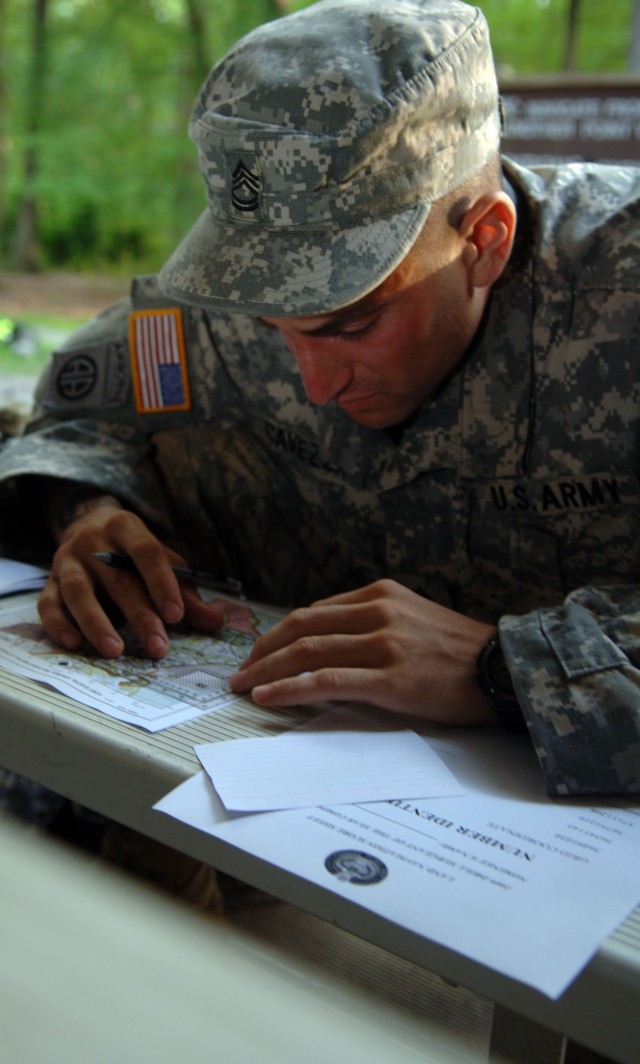


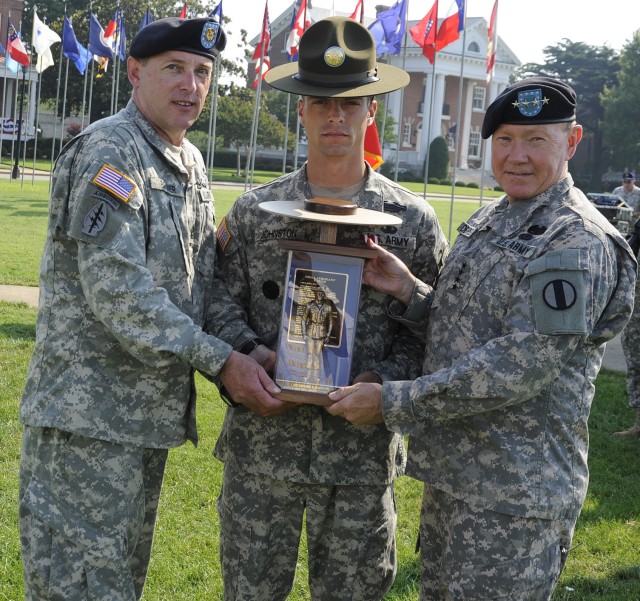


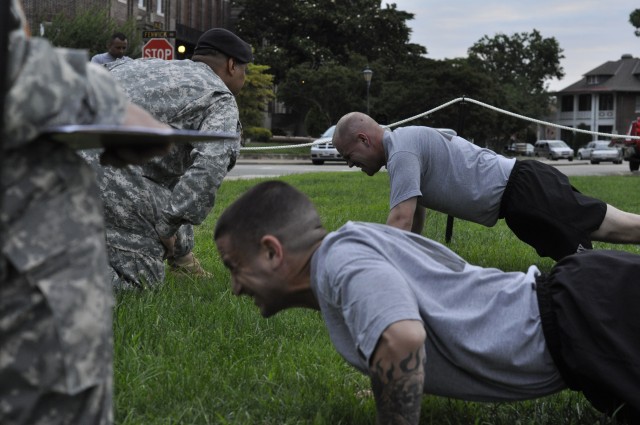


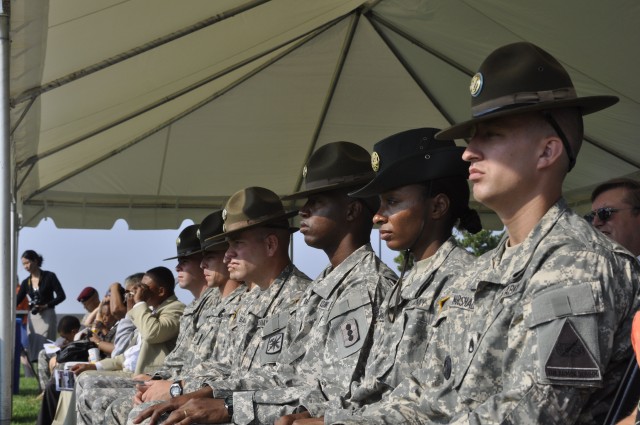





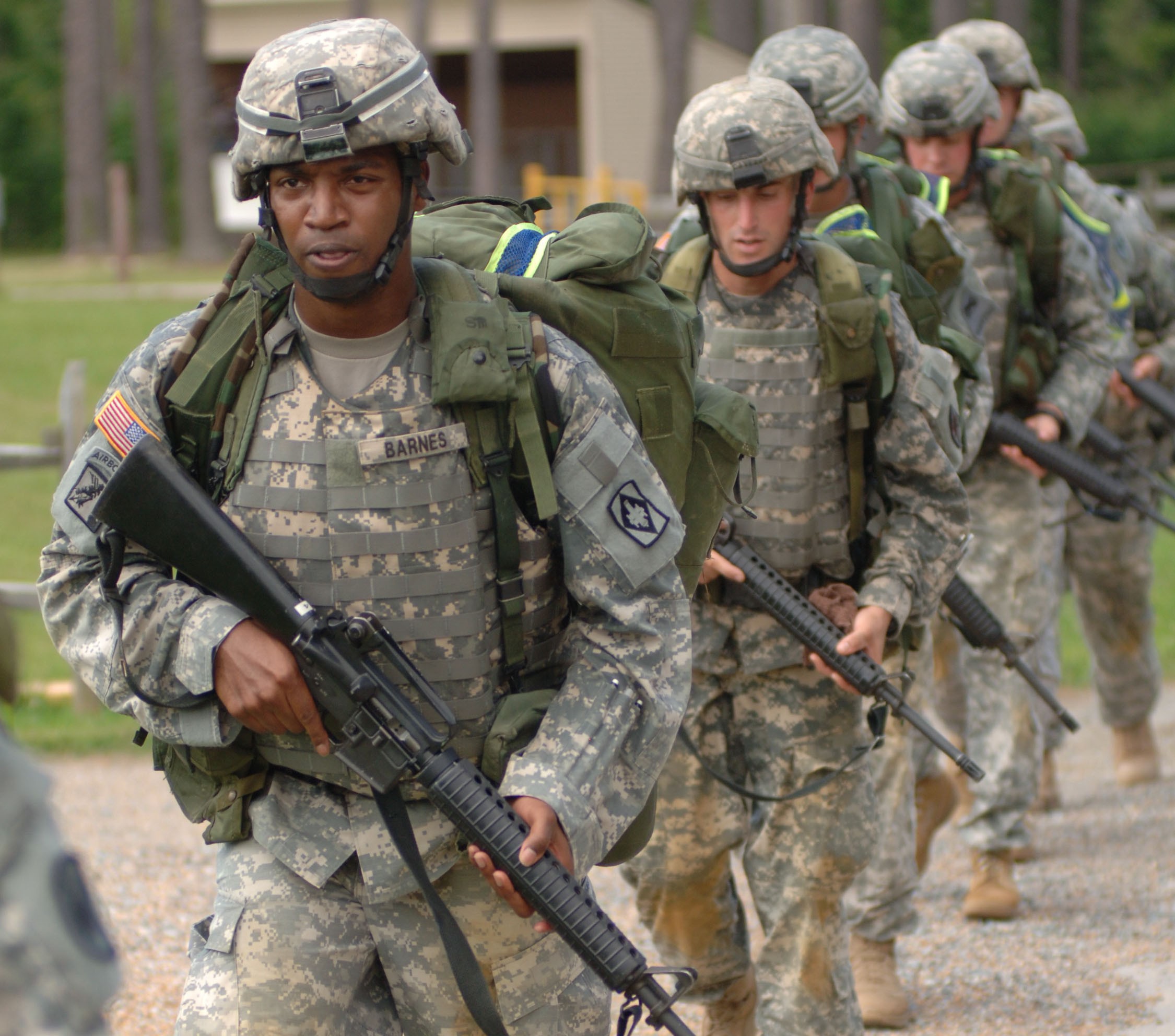
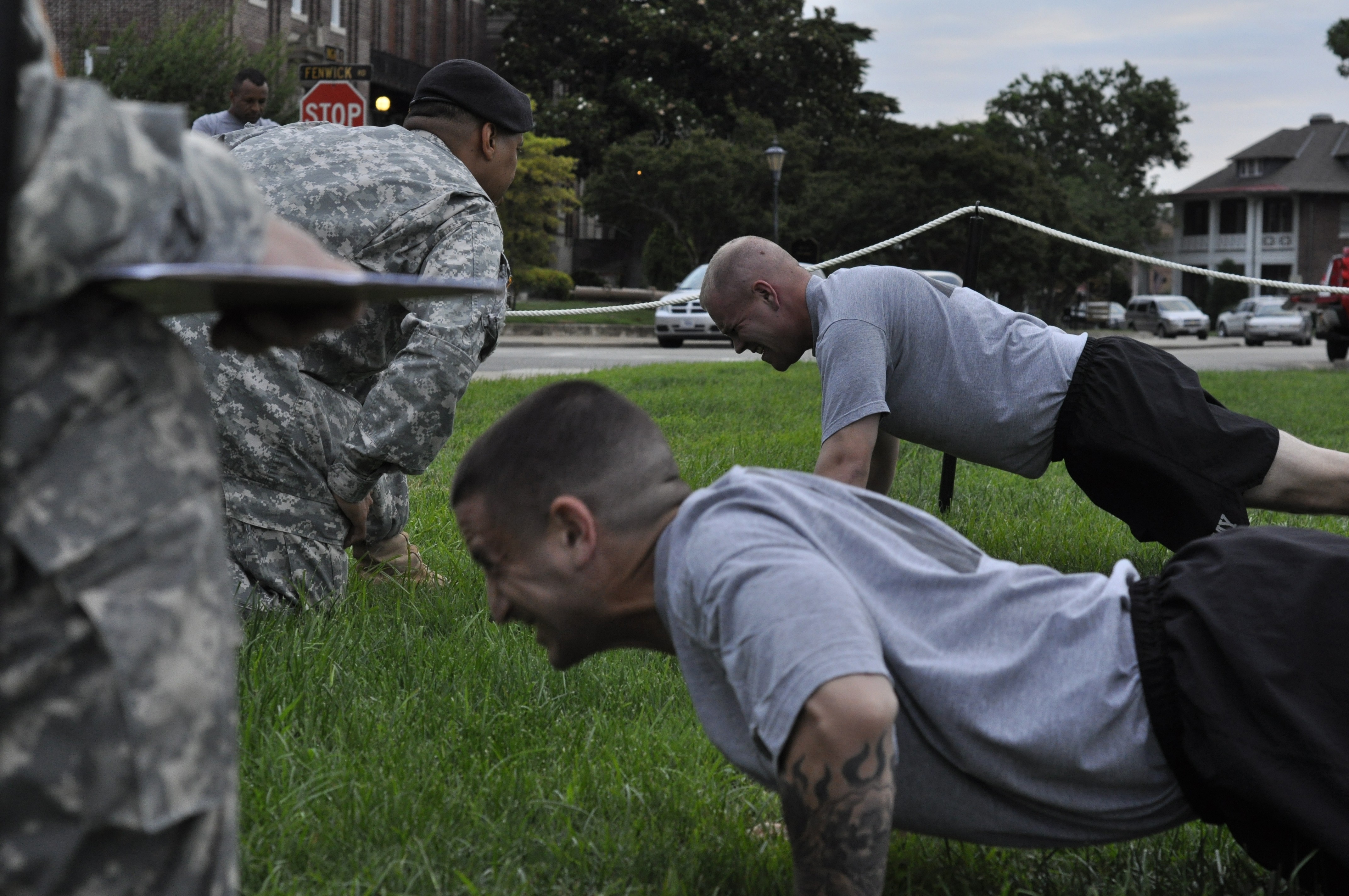
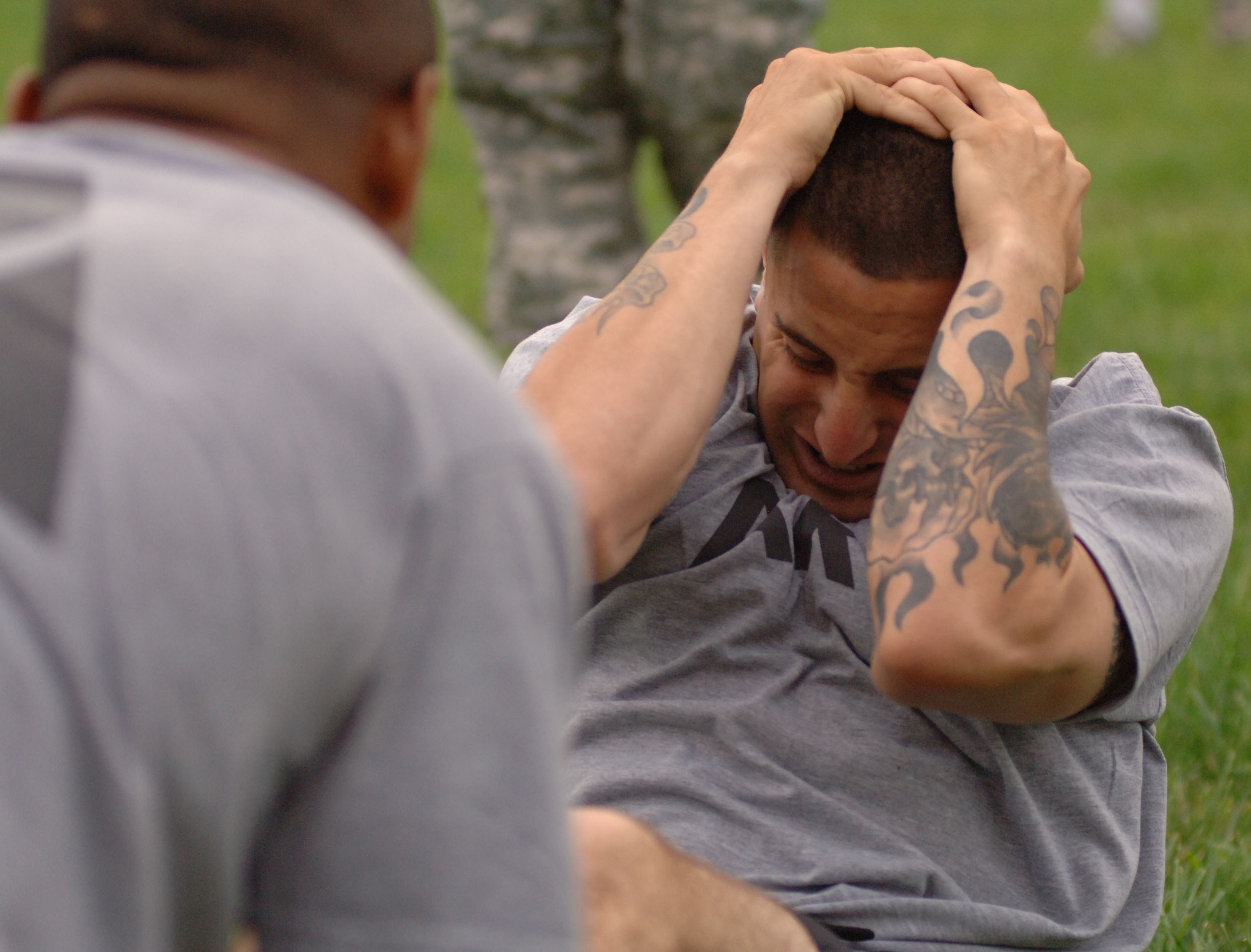


Social Sharing